#psep
Explore tagged Tumblr posts
Text
PTTEP partners with PCSB and PSEP in Block SK325, offshore Malaysia
Dateline 2023-02-XX, Europetrole: PTT Exploration and Production Public Company Limited (PTTEP) joins PETRONAS Carigali Sdn. Bhd. (PCSB) and Petroleum Sarawak Exploration & Production Sdn. Bhd. (PSEP) as a partner in offshore exploration Block SK325. The investment further expands PTTEP’s growth opportunity in Malaysia while strengthening relationship with business partners. PTTEP Chief…
View On WordPress
0 notes
Text


Edwin "Buzz" Aldrin unpacks EASEP (Early Apollo Surface Experiments Package) experiments from LM Eagle. July 20, 1960
Due to the risk of an early abort on the Moon, geologists persuaded NASA to permit only experiments that could be set up or completed within 10 minutes. As a result, Apollo 11 did not carry a full ASLEP package, leaving a simpler version called EASEP. The EASEP included a Laser Ranging Retroreflector (LRRR), and Passive Seismic Experiment Package (PSEP), which was sensitive enough to pick up Armstrong and Aldrin's footfalls on the lunar surface.

LRRR on the lunar surface. Apollo 11's LRRR is still used today to measure distance to the Moon from Earth.

Aldrin standing next to the assembled PSEP.
Project Apollo Archive
4 notes
·
View notes
Text
Private equity firms are increasingly profiting from cleaning up climate disasters in the US, while failing to better protect workers and often also investing in the fossil fuels that are causing the climate emergency, new research has found.
The demand for skilled disaster restoration or resilience workers, who are mostly immigrants and refugees from Latin America and Asia, is soaring as greenhouse gases released by burning fossil fuels heat the planet, provoking more destructive storms, floods and wildfires.
As the industry has become more profitable, at least 72 companies that specialize in disaster cleanups and restoration have been acquired by private equity firms since 2020, according to the research, by the Private Equity Stakeholder Project (PSEP) and Resilience Force, a labor rights organization with thousands of members.
Wage theft, lack of protective clothing, and other unsafe conditions are rampant across the industry at the expense of workers, communities and climate, according to the report, Private Equity Profits from Disasters, shared exclusively with the Guardian.
At risk are tens of thousands of resilience workers, traveling from disaster to disaster cleaning up and rebuilding American communities while facing hazards such as unstable buildings, ash and other toxins, and water-borne diseases.
Researchers found that an increasingly complex web of franchises, contractors and subcontractors, insurance providers, labor brokers and agencies and mostly temporary jobs makes it difficult for workers to know who is ultimately accountable for violations.
“Disasters have become more intense and destructive, and rebuilding has become more profitable. As the money started pouring in, companies started consolidating, and private equity started circling and buying up these companies,” said Saket Soni, director of Resilience Force. “Wage theft and health and safety violations are deeply endemic … and private equity is failing to establish higher standards.”
Osha, the federal Occupational Safety and Health Administration, recorded 194 violations at private-equity owned restoration companies and their franchises between January 2015 and January 2022, the report found.
Most violations were classified as serious, and included failures to protect workers from asbestos, respiratory problems and falls. (The true number of health and safety violations is likely to be higher given the small number of Osha compliance officers).
It is impossible to say precisely what proportion of the disaster workforce is currently controlled by private equity, but acquisitions are gathering pace, with 14 in the first six months of this year compared to 13 during the entire course of 2020. Acquisitions included companies from 28 states, but most were in Florida and Texas – states hit by multiple billion-dollar climate disasters in recent years.
“This is the latest example of a disturbing trend where we see private equity coming into industries where there is a lot of money – and indeed a lot of federal investment – in order to pad their pockets by cutting costs,” said the Democratic congresswoman Pramila Jayapal. “This is already a dangerous industry … cutting costs will cut quality, and increase the threats to essential workers – who are already extremely vulnerable to greedy employers. Those who put up the money, in this case private equity, are ultimately responsible.”
Overall, the number and cost of weather and climate disasters in the US is rising due to a combination of population growth, development and the influence of human-caused global heating on extreme events like floods, drought and fires. Over the past seven years (2016 to 2022), 122 separate billion-dollar disasters have killed at least 5,000 people and cost more than $1tn in damage, according to data compiled by the National Oceanic and Atmospheric Administration (Noaa).
Historically, the disaster restoration industry was made up of smaller, independent businesses handling local projects. But after Hurricane Katrina in 2005, private equity firms saw an opportunity to consolidate the market by buying up smaller companies, and some estimates value the US restoration industry as high as $200bn. The Restoration Industry Association, whose board includes three private equity executives, did not respond to the Guardian.
Taxpayer dollars increasingly pay for restoration costs – involving public buildings like schools and hospitals, and for folks without insurance. Yet the Federal Emergency Management Agency, Fema, does not attach mandatory labor or health and safety standards to its payouts, while private equity firms have a track record in cost cutting to maximize profits.
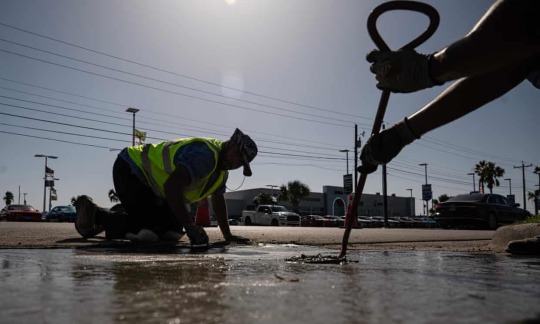
Private equity refers to an opaque form of private financing in which funds and investors buy and restructure companies, including troubled businesses and real estate, using money from wealthy individuals and institutional investors such as university endowments and state employee pension funds.
In recent years, some private equity firms have become major greenhouse gas polluters, often acquiring risky oil, gas and coal projects with minimal public scrutiny or regulatory oversight – which means firefighters, nurses and teachers have little way of knowing if their retirement nest egg is financing police surveillance equipment, disaster companies or leaky pipelines.
Researchers found a third of the private equity companies with disaster restoration company investments are also backing fossil fuel-linked projects – ostensibly profiting from the cause and effect of the climate emergency.
The Blackstone Group, the world’s largest private equity firm, which manages over $1tn, backs 21 energy companies, of which 52% are fossil-fuel projects. In 2020, Blackstone’s power plants produced 18.1m metric tons of carbon dioxide emissions into the atmosphere – equivalent to the annual emissions of nearly 4m gas-powered vehicles.
Blackstone’s institutional investors include Los Angeles, Maine, Arizona, North Carolina, Texas, New York state and Oregon public sector worker pensions.
In March 2019, Blackstone acquired a majority share in Servpro Industries, a damage restoration company with more than 2,000 independently owned and operated franchises across the US and Canada. Servpro franchises helped with restoration efforts after Hurricanes Harvey, Matthew and Sandy – some of the most devastating storms to hit the US mainland in recent years.
Higher temperatures and sea level rise caused by burning fossil fuels are making storms more intense and destructive.
In Massachusetts, a Servpro franchise in 2022 settled claims by the state that its restoration work at an elementary school led to asbestos contamination, forcing the school to close for months. In November 2019, a Servpro franchise in Boynton Beach, Florida, was forced to pay more $200,000 in back wages to almost 150 restoration workers after a department of labor investigation.
In another example the commercial restoration firm BlueSky, which operates in more than 40 states, is owned by two private equity companies including Partners Group, whose portfolio also includes gas pipeline companies in the US and Europe.
“Firms like Blackstone are using the public’s money to personally profit off both sides of disasters,” said Azani Creeks, PESP research coordinator and co-author of the report.
“Public employees have a right to know that their pension dollars are being used to purchase fossil-fuel plants that are contributing to climate disasters – and companies that profit off of these very disasters, most often off the backs of wage workers with little health and safety protections.”
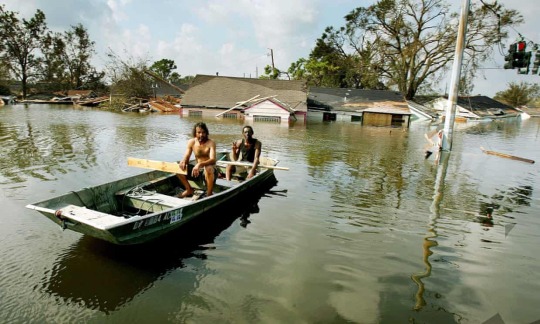
A Blackstone spokesperson rejected the report’s findings as “cherry-picking”, and said that some of the cases related to matters prior to their investment – and that there was no evidence that the alleged shortcomings were related to private equity ownership.
“As a franchisor, Servpro Industries does not control or direct the operations of its independent local franchises, nor does it employ their workers … Since Blackstone’s investment, the company has expanded the training resources available to its franchisees – including worker safety related to Osha compliance and use of personal protective equipment, among other areas – and continually evaluates ways to further expand and enhance those efforts.”
Blackstone had invested more than $20bn in the energy transition, the spokesperson said: “Legacy exploration and production investments today total less than 1% of our overall fair market value portfolio.”
According to the 2022 state of the industry report, the biggest issues facing the disaster restoration industry is finding – and retaining – skilled workers, and increasing wages for certified employees.
Information about the disaster workforce is limited, but more than 100,000 people are estimated to work occasionally or full time in the industry, according to Resilience Force. Most workers are concentrated in southern states prone to natural disasters like Louisiana, Texas and Florida, but are often deployed thousands of miles away for weeks or months at a time. It is a male-dominated industry, but also includes thousands of women, with Honduras, El Salvador, Mexico, Venezuela, Brazil, India and the Philippines among some of the most common countries of origin.
While the work is predominantly done by immigrants who are often undocumented or have temporary residency status, the workforce also includes current and ex-incarcerated people and US-born people of color – also groups which have historically faced discrimination and poor working conditions.
In one case, migrant workers who helped rebuild luxury hotels destroyed by Hurricane Irma in Florida Keys in 2017, were forced to sue Cotton Commercial, acquired by the private equity firm Sun Capital in 2020, and a temp agency to recover more than $280,000 in back pay and damages.
A spokesperson for Cotton said: “All Cotton contracts include provisions on subcontractors’ responsibility for payment to their personnel in accordance with all applicable employment laws and regulations, as well as strict safety requirements.”
The need for climate resilience workers is likely to continue rising, and next month Jayapal will re-introduce the 2022 Climate Resilience Workforce Act which would help create a well-trained, fairly paid workforce to help the US prepare for the climate emergency – and ease the transition to a green economy.
Soni, the director of Resilience Force, said: “Disaster restoration is a public good, and we need a strong sustainable workforce as disasters increase. Many people deeply love the work and are dedicated … but the work gets more dangerous year after year, because there are no standards. We’re depleting the workforce when we ought to be building it.”
3 notes
·
View notes
Text
So it's not ideal but I think I'm not going to go the gym today or tomorrow and instead maybe just take Oreo on some short walks as weather allows.
Reason #1: Today I have that doctor's appointment smack in the middle of my normal gym time, and I'm just not feeling up to going earlier (see Reason #3)
Reason #2: Tomorrow I have a PSEP call (I don't really understand this) at 3 as well. I don't usually go to the gym on Wednesdays lately because it's not a lifting/weights day, but the idea of a phone call is stressing me out. This also means that I definitely don't want to go tomorrow (ie, I don't want to skip today and then go tomorrow).
Reason #3: I'm feeling a little bit triggered this morning so it doesn't really feel safe to go exercise at the gym atm. Especially because I am having a realllllly hard time eating breakfast today because of said trigger (it's a long story but relates to health stuff more than body image stuff).
Reason #4: Because my hike kind of messed up my gym schedule, I'm currently off from my usual and today would have been upper body instead of lower. If I continue going regularly this would be my new norm, where I do lower, then upper, then rest/cardio. I could be flexible and just switch my days, but I'd prefer not because the way my body experiences DOMS, it's usually user to do upper, lower, then rest/cardio. By not going today or tomorrow, upper body will once again be on M and Th, and everything will be fixed.
Reason #5: I have a little bit of a cold and have been clearing my throat more last night and this morning. I don't think it's covid at all, but it's probably better for me to allow my body to rest a little more and only do light activity (ie, walking). Additionally, we have a lot of elderly people at the gym (which is great!) and I don't know health status of them or any of the other gym-goers, so I just don't want to potentially expose them to anything, you know?
Sure I guess it's not ideal to only train chest, arms, and upper back once this week, but I think it'll actually help me out in the long run and is probably the more conscientious choice.
3 notes
·
View notes
Text
Security Systems Technician / PSEP - TS/SCI
Security Systems Technician / PSEP – TS/SCI Job Category: Engineering and Technical Support Time Type: Full time Minimum Clearance Required to Start: TS/SCI Employee Type: Regular-Long Term Assignment Percentage of Travel Required…Apply Now
0 notes
Text
https://www.uky.edu/Ag/Entomology/PSEP/fumsafety.html?fbclid=IwAR1W8FLxf_tq99eAsdWfeDM-dFOZAahXv5KKOblenS_CqdkqOW6Or622pkI
0 notes
Text
0 notes
Text
NOAA Ocean Service: NOAA Planet Stewards
#ProtectTheOceans #BeneathTheSurfaceLiesTheFuture
"NOAA Planet Stewards provides all educators working with elementary through college-aged students access to opportunities and resources enabling them to build up scientifically literate individuals and communities, and preparing them to respond to environmental challenges.
NOAA Planet Stewards also supports educators’ efforts to implement hands-on action-based projects that conserve, restore, and protect human communities and natural resources from environmental challenges."
0 notes
Video
youtube
A brief anecdotal review and assessment of the Center for Global Integrated Education social justice educational program called Pamomares Spiritual Empowerment Program (PSEP), 2014-2017. In this video, Keyvan Geula LMFT, the director and supervisor of the program is assessing some of the unique features of the curriculum and its implementation with two of her interns and collaborators, Valerie Zamora and Susan Selfridge, who are graduates of Cal Poly Pomona in Psychology.
0 notes
Photo

💙[𝕆ℂ 𝔹𝔼𝕃𝕆ℕ𝔾𝕊 𝕋𝕆 𝕄𝕐 𝔸𝕄𝔸ℤ𝕀ℕ𝔾 𝔽ℝ𝕀𝔼ℕ𝔻 @nibblesbibble ]💙 #oc #ocfanart #originalcharacter #ocdrawing #whiteboardfox https://www.instagram.com/p/Cm4s3j-PsEp/?igshid=NGJjMDIxMWI=
0 notes
Text
Malaysia: PETRONAS signs new Discovered Resource Opportunities PSCs
Dateline 2023-01-18, Energy Pedia: PETRONAS has signed Production Sharing Contracts (PSCs) for three clusters of Discovered Resource Opportunities (DRO) marketed under the Malaysia Bid Round (MBR) 2022. The A Cluster was awarded to Ping Petroleum and Petroleum Sarawak Exploration & Production (PSEP), while Dialog Resources and PSEP won the bid for the Baram Junior Cluster. Both clusters are…
View On WordPress
0 notes
Text

World AIDS Day
It is high time that we wake up and accept people with AIDS because ignoring them can make them weaker. Happy World AIDS Day to all.
For more information please visit our website.
website:http://www.chobhekitchens.com/
website:http://www.mediteel.com/
website:https://saniteel.com/
For more details contact us.
Mobile Number:+91 9175901347
Email Id:[email protected]
l
0 notes
Photo

📦Re Stock Arrived 🌞imai🌝 💿PSEP(CD) 1,500yen(taxin) ----------------------------------------------------------- 当店でもロングセラーのgroup_inouのトラックメーカー、imaiさんのソロ作品、CD『PSEP』セカンドプレスをimaiさん本人から直接納品頂き再入荷しました。 先着でPLAYSETステッカー付きです。 入荷の度にすぐになくなるので未聴の方はこの機会に是非! ----------------------------------------------------------- ☎︎0669406393 ✉︎[email protected] ----------------------------------------------------------- ⚫︎通販可能です(銀行振込のみ) ⚫︎お問い合わせは電話かメールのみお受けしてます。 ⚫︎instagramのコメント、DMでの返信は致しかねます。 ⚫︎商品のお取り置きは行っておりませんのでご了承ください。 ----------------------------------------------------------- #sunshinemoonlight #imai #psep #group_inou #cd #大阪 #中崎町 #梅田 (Sunshine Moonlight)
2 notes
·
View notes
Link
Advertisers need to comprehend where they're at in their substance venture and what they should concentrate on to progress.
#seo#socialmedia#socialmediamarketing#branding#follow#startup#contentmarketing#strategy#business#seoServices#digitalmarketingcareers#socialmediamarketer#dmc#mobilemarketing#psep#SEO onpage#seo offpage
0 notes
Text

"Astronaut Edwin E. 'Buzz' Aldrin Jr., Lunar Module pilot, is photographed during the Apollo 11 extravehicular activity on the Moon.

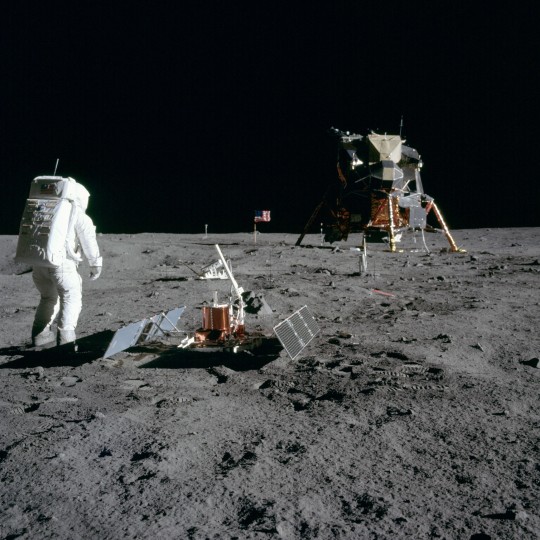

He has just deployed the Early Apollo Scientific Experiments Package (EASEP). In the background is the United States flag; in the left background is the black and white lunar surface television camera; in the far right background is the Lunar Module 'Eagle'.

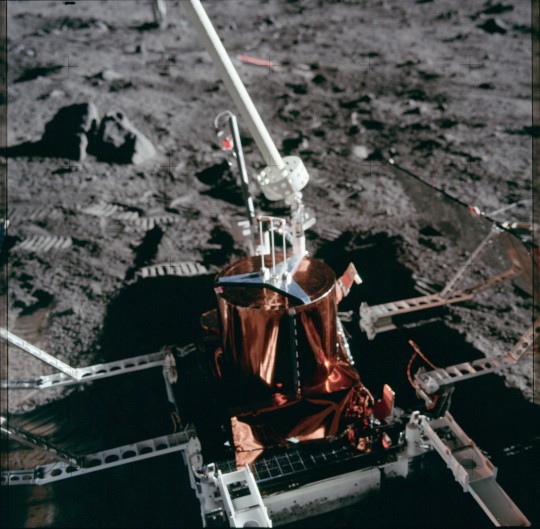
In the foreground is the Passive Seismic Experiment Package (PSEP).
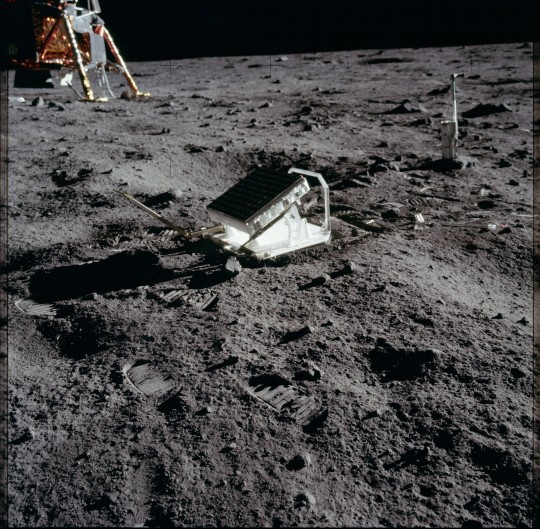
Beyond it is the Laser Ranging Retro-Reflector (LR-3). Astronaut Neil A. Armstrong, commander, took this photograph with a 70mm lunar surface camera."
Date: July 20, 1969
NASA ID: AS11-40-5946, AS11-40-5947, AS11-40-5948, AS11-40-5949, AS11-40-5950, AS11-40-5951, AS11-40-5953, AS11-40-5952
#Apollo 11#Lunar Module#LM-5#Eagle#Apollo Program#moon landing#moon#July#1969#NASA#my post#Buzz Aldrin
127 notes
·
View notes